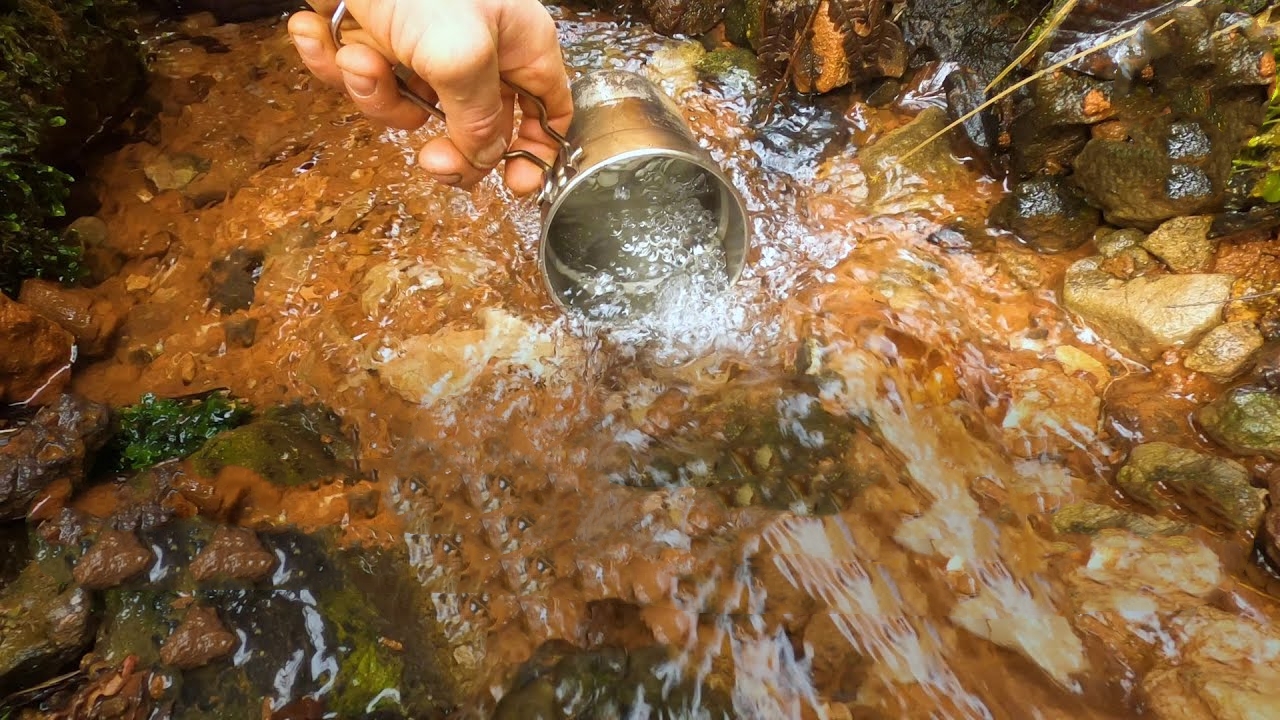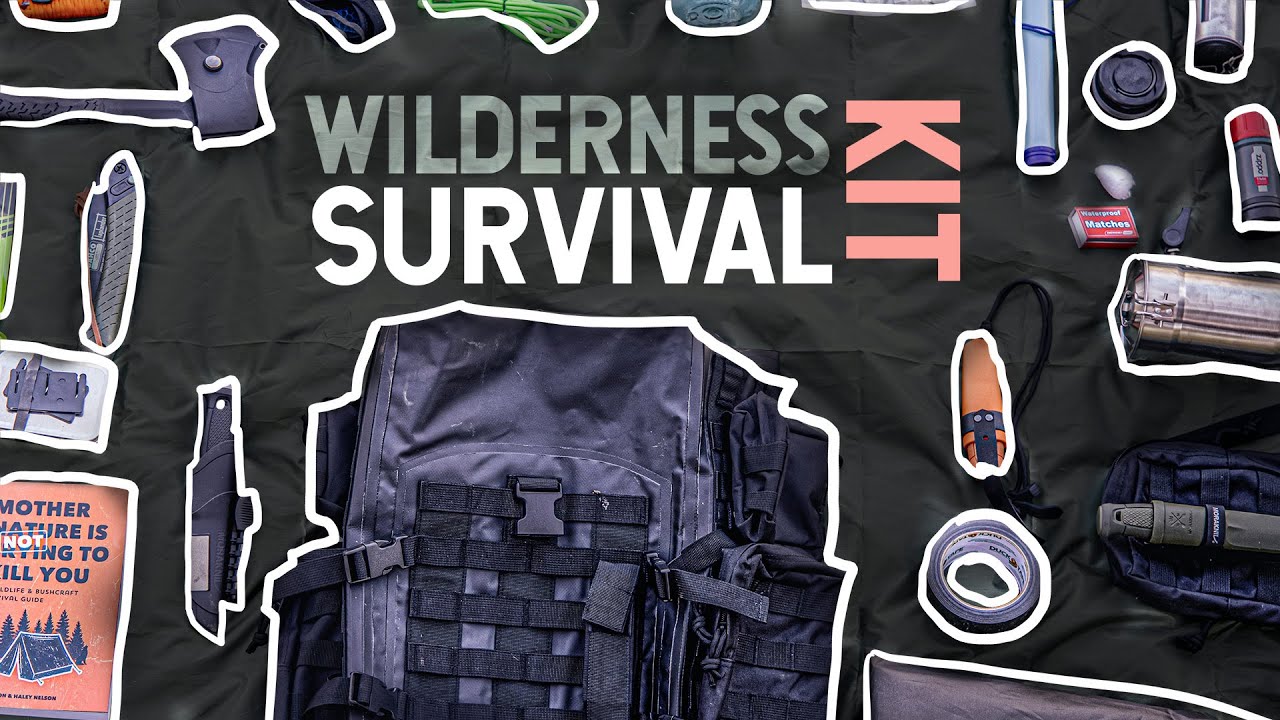Venturing into the wilderness offers an unparalleled opportunity to connect with nature and test the limits of our survival instincts. However, it’s a realm where the unprepared can quickly find themselves facing challenges that range from uncomfortable to life-threatening. This is where the importance of being equipped with the right gear comes into play.
In the wild, every decision matters, and every piece of gear serves a purpose. It’s not just about convenience; it’s about ensuring your safety, sustenance, and ultimately, your triumph over the wild’s unpredictabilities. In this comprehensive guide, we’ll delve into the ten indispensable items every wilderness enthusiast should have in their arsenal.
Beyond the basics of food and water, we’ll explore the tools that can make the difference between a daunting survival scenario and a well-managed adventure. From the versatile survival knife to the criticality of shelter and medical preparedness, each item on our list plays a vital role in your wilderness journey.
So, whether you’re a seasoned outdoorsman or a novice explorer, join us as we unpack the essentials that will not only enhance your wilderness experience but also provide you with the confidence and capability to thrive in the wild. Let’s embark on this journey together, armed with knowledge and equipped for success.
1. Water: Sustaining Life in the Wilderness

Water is not just an essential component of life; it’s the very essence of it. In the wilderness, the significance of water cannot be overstated. It’s the elixir that keeps you going, and your ability to secure a clean and sufficient supply can make or break your survival.
1.1 Significance of Water in Human Physiology:
- The Human Body’s Dependence on Water: Up to 60% of our bodies are composed of water, emphasizing its vital role in our physiological functions.
- Maintaining Hydration Balance: Water regulates body temperature, aids digestion, and transports nutrients, underscoring its criticality to our well-being.
- Dehydration Dangers: Even mild dehydration can lead to fatigue, impaired decision-making, and, in extreme cases, life-threatening conditions.
1.2 Risks of Dehydration in the Wilderness:
- The Wilderness Challenge: In the wild, staying hydrated is especially challenging due to increased physical activity, higher temperatures, and limited access to water sources.
- The Silent Threat: Dehydration often creeps up unnoticed, leading to poor concentration, reduced physical performance, and susceptibility to accidents.
1.3 Methods for Ensuring Adequate Hydration:
- Purification Systems: Carry a reliable water purification system like a portable water filter, UV purifier, or chemical treatment tablets to make natural water sources safe for drinking.
- Carry Enough Water: Always carry more water than you think you’ll need, especially in arid environments.
- Hydrate Strategically: Develop a hydration schedule to ensure consistent fluid intake throughout the day, and pay attention to your body’s signals for thirst.
- Water Conservation: Learn techniques like moisture collection and minimizing sweat to conserve precious water supplies.
In the wilderness, water is not just a beverage; it’s a lifeline. By understanding its importance, recognizing the risks of dehydration, and being equipped with the means to ensure a clean water supply, you’ll be taking a crucial step toward a safer and more enjoyable wilderness experience.
2. Food: Fueling Your Wilderness Journey
In the rugged terrain of the wilderness, food is more than just sustenance; it’s the fuel that powers your body through the challenges that nature presents. Proper nutrition not only maintains your energy levels but also supports mental clarity and physical strength, ensuring you’re at your best when navigating the wild.
2.1 Energy Requirements for Optimal Performance:
- Caloric Needs: Understanding your body’s caloric requirements is crucial. In the wild, physical exertion and exposure to the elements can significantly increase your energy expenditure.
- Balanced Nutrition: Seek a balance of macronutrients – carbohydrates, proteins, and fats – to provide sustained energy and support muscle function.
2.2 Emphasis on Quality Over Quantity:
- Nutrient-Dense Choices: Opt for foods that provide a high concentration of nutrients relative to their calorie content. This includes nuts, seeds, dried fruits, and lean proteins.
- Minimize Processed Foods: Processed foods often contain excessive sugar, sodium, and preservatives, which can lead to energy spikes and crashes.
2.3 Examples of Energy-Rich and Easily Prepared Foods:
- Trail Mix: A combination of nuts, dried fruits, and seeds offers a balanced mix of carbohydrates, healthy fats, and proteins.
- Jerky: Lean protein sources like beef, turkey, or even plant-based alternatives provide a quick and portable energy boost.
- Nut Butter Packets: Peanut, almond, or cashew butter packets are dense in calories and healthy fats, providing sustained energy.
In the wild, strategic food choices can be the difference between thriving and merely surviving. By understanding your body’s energy needs, prioritizing nutrient-dense options, and incorporating easily prepared, high-energy foods into your diet, you’ll be better equipped to conquer the challenges of the wilderness. Remember, quality nutrition is the cornerstone of a successful wilderness adventure.
3. Knife: The Versatile Companion in the Wilderness
In the realm of wilderness survival, a reliable knife is akin to an extension of oneself. Its versatility makes it one of the most indispensable tools, serving a myriad of functions from crafting shelter to procuring food. Understanding its significance and choosing the right one can be the key to your success in the wild.
3.1 Versatility and Importance of a Survival Knife:
- All-Purpose Tool: A good survival knife can perform a wide range of tasks, from cutting rope to preparing food, making it an invaluable asset.
- Self-Defense and Protection: In emergency situations, a sturdy knife can be used for protection against wildlife or as a tool for self-rescue.
3.2 Functions Including Path Clearing, Shelter Building, Food Preparation, and Hunting:
- Path Clearing: A survival knife can be used to clear a path through dense vegetation, making travel through rugged terrain more manageable.
- Shelter Building: Its ability to cut and shape wood is crucial for constructing shelters that provide protection from the elements.
- Food Preparation: From gutting and skinning to filleting, a sharp knife is essential for preparing game or fish for consumption.
- Hunting and Trapping: A knife can serve as a backup hunting tool, aiding in the preparation and processing of game.
3.3 Characteristics of an Ideal Survival Knife:
- Blade Material: High-carbon stainless steel blades strike a balance between durability and corrosion resistance, making them ideal for survival situations.
- Full Tang Construction: A full tang knife, where the blade extends through the handle, offers superior strength and durability.
- Ergonomic Handle: A comfortable, non-slip handle ensures a secure grip even in wet or challenging conditions.
A well-chosen survival knife is an extension of your skills and resourcefulness in the wild. Its versatility empowers you to tackle a range of tasks crucial for survival. By understanding the functions it serves, and carefully considering the characteristics of an ideal knife, you’ll be better prepared to choose a tool that will serve you faithfully in the wilderness. Remember, a quality knife is not just a tool; it’s a trusted companion.
4. Shelter/Shelter Building Equipment: Crafting Your Wilderness Abode
In the wild, your shelter is your sanctuary. It’s the difference between being exposed to the elements and having a secure, weather-resistant refuge. Understanding the criticality of shelter and having the right equipment to construct it can mean the difference between a comfortable night and a harrowing one in the wilderness.
4.1 Criticality of Shelter in Survival Situations:
- Protection from the Elements: A well-constructed shelter shields you from rain, wind, and extreme temperatures, helping to maintain your core body temperature.
- Psychological Comfort: Having a shelter provides a sense of security and can help reduce stress and anxiety in challenging situations.
4.2 Considerations for Choosing Shelter Options:
- Terrain and Environment: Consider the specific environment you’re in – mountains, forests, deserts – and choose a shelter design that suits the terrain and weather conditions.
- Available Resources: Utilize natural materials such as branches, leaves, and rocks whenever possible. This not only conserves your resources but also integrates you more harmoniously with the environment.
4.3 Alternatives to Traditional Shelters Using Natural Materials:
- Lean-Tos: Simple and effective, lean-tos utilize a slanted roof made from branches or foliage to provide shelter from rain and wind.
- Debris Huts: Constructed using a framework of branches covered with leaves, debris huts offer insulation and protection from the elements.
- Snow Caves or Trench Shelters: In snowy environments, digging into the snow can provide excellent insulation, creating a cozy shelter.
Having the right shelter-building equipment is akin to carrying a portable home on your back. By understanding the importance of shelter and considering the environment and available resources, you can choose the most suitable shelter option. Whether it’s a lightweight tent, a tarp, or the knowledge to craft a shelter from natural materials, having the means to create a secure refuge is a cornerstone of wilderness survival. Remember, in the wild, your shelter is your first line of defense against the unpredictable forces of nature.
5. First Aid Kit: Your Lifeline in Remote Environments
In the wilderness, being prepared for medical emergencies is not just a precaution; it’s a necessity. A well-equipped first aid kit can be the difference between swiftly addressing minor injuries and facing potentially life-threatening situations. Understanding the importance of medical preparedness and having the right components in your kit is paramount to a safe wilderness adventure.
5.1 Importance of Medical Preparedness in Remote Environments:
- Distance from Medical Help: In the wilderness, access to professional medical care is limited or non-existent. A well-stocked first aid kit becomes your primary means of medical intervention.
- Addressing Minor Injuries: Prompt attention to minor cuts, abrasions, and insect bites can prevent them from escalating into more serious conditions.
5.2 Vital Components of a Compact First Aid Kit:
- Sterile Dressings and Bandages: These are essential for covering wounds, controlling bleeding, and preventing infections.
- Antiseptics and Disinfectants: Items like antiseptic wipes or solutions help clean wounds and reduce the risk of infection.
- Pain Relievers and Anti-Inflammatories: Over-the-counter medications can provide relief from pain, inflammation, and fever.
- Adhesive Tape and Scissors: These are crucial for securing bandages and cutting materials.
- Tweezers and Safety Pins: Useful for removing splinters, thorns, or foreign objects from wounds.
- Personal Medications: If you have specific medical conditions, carry any necessary prescription medications.
5.3 Addressing Minor Injuries and Preventing Infections:
- Wound Cleaning: Thoroughly clean wounds with antiseptics to reduce the risk of infection.
- Proper Dressing: Apply sterile dressings and bandages to cover and protect wounds.
- Monitoring and Follow-Up: Keep an eye on any injuries, checking for signs of infection or worsening conditions.
In the wilderness, a well-prepared first aid kit is your lifeline. By understanding the importance of medical preparedness and assembling a comprehensive kit with the right components, you’re not just taking precautions – you’re ensuring your ability to respond effectively to unforeseen medical situations. Remember, in the wild, your first aid kit is your most reliable medical resource.
6. Rain Jacket or Raincoat: Defying Nature’s Unpredictability
Nature is known for its capriciousness, and the weather in the wilderness can change in an instant. A quality rain jacket or raincoat is your shield against unexpected downpours, ensuring you stay dry, comfortable, and safe. Understanding the importance of rain protection and having a reliable garment can be the key to weathering storms in the wild.
6.1 Unpredictability of Weather Conditions in the Wilderness:
- Nature’s Whims: Even in regions with predictable climates, the weather in the wilderness can be highly unpredictable, with sudden storms and temperature fluctuations.
6.2 Role of Rain Protection in Ensuring Comfort and Safety:
- Maintaining Core Body Temperature: Staying dry is crucial for regulating body temperature. Wet clothing can lead to rapid heat loss, increasing the risk of hypothermia.
- Psychological Well-Being: Staying dry boosts morale and mental resilience, allowing you to focus on the tasks at hand.
6.3 Contingency Planning for Unexpected Weather Changes:
- Layering: Having a rain jacket allows you to layer clothing for added warmth and protection.
- Weather Apps and Forecasts: Stay updated on weather conditions and forecasts for your area, and be prepared to adapt your plans accordingly.
A reliable rain jacket or raincoat is more than just an accessory; it’s a critical component of your wilderness gear. By understanding the unpredictable nature of wilderness weather and recognizing the importance of staying dry, you’re equipping yourself to face unexpected rain or storms with confidence. Remember, in the wild, being prepared for sudden weather changes can mean the difference between an uncomfortable detour and a safe, enjoyable adventure.
7. Signaling Device: Communicate Your Presence, Ensure Your Safety
In the vast expanses of the wilderness, reliable communication methods are essential for ensuring your safety and facilitating potential rescues. A signaling device serves as your lifeline, enabling you to alert others to your presence and request assistance if needed. Understanding the limitations of mobile phones and having a reliable signaling device is paramount for wilderness adventurers.
7.1 Limitations of Mobile Phones in Emergencies:
- Sparse Coverage Areas: Many wilderness areas have limited or no mobile network coverage, rendering phones ineffective as a primary means of communication.
- Battery Life and Charging Challenges: Battery life is a critical concern, and charging options in the wilderness are often scarce.
7.2 Necessity for Reliable Communication Methods in the Wild:
- Emergency Situations: In case of injury, illness, or other emergencies, a signaling device ensures you can call for help even in areas without mobile reception.
- Coordinating with Others: If you’re part of a group, having a reliable means of communication is essential for coordinating movements and ensuring everyone’s safety.
7.3 Effectiveness of Signaling Devices in Emergency Situations:
- Whistles: Lightweight and easy to carry, whistles are effective for alerting others to your location, especially in areas with dense vegetation or limited visibility.
- Signal Mirrors: Compact and highly reflective, signal mirrors can be used to attract the attention of search and rescue teams from a distance.
- Personal Locator Beacons (PLBs) or Satellite Messengers: These devices use satellite technology to send distress signals, providing precise location information to search and rescue teams.
A reliable signaling device is a crucial aspect of your wilderness safety toolkit. By understanding the limitations of mobile phones, and recognizing the necessity for reliable communication methods, you’re taking a proactive step towards ensuring your safety in the wild. Remember, in the wild, having the means to call for help can be the lifeline that brings you back to safety.
8. Lighter or Matches: Igniting Your Wilderness Survival Skills
Fire is not just a source of warmth; it’s a primal tool that can mean the difference between comfort and distress, between a hot meal and a cold one, and even between life and death in certain situations. Carrying a reliable lighter or waterproof matches is a fundamental aspect of wilderness preparedness.
8.1 Importance of Fire for Warmth, Cooking, and Protection:
- Thermal Comfort: Fire provides essential warmth, especially in cooler climates or during the night.
- Cooking and Purification: Fire allows you to cook food, making it safer for consumption, and also to purify water.
- Psychological Well-Being: The presence of a fire can provide a sense of security and comfort in the wild.
8.2 Challenges of Primitive Fire-Starting Methods:
- Skill and Experience Required: Methods like friction fire-starting require significant skill and practice, which may not be feasible in high-stress situations.
- Dependence on Weather Conditions: Primitive methods can be highly weather-dependent, making them unreliable in damp or windy conditions.
8.3 Reliability and Advantages of Lighters or Waterproof Matches:
- Convenience and Speed: Lighters and waterproof matches offer a quick and reliable means of igniting a fire, crucial in emergency situations.
- Wind and Water Resistance: These tools are designed to function even in adverse weather conditions, making them a dependable choice for wilderness adventurers.
A reliable lighter or a set of waterproof matches is more than just a convenience; it’s a critical tool for wilderness survival. By understanding the multifaceted importance of fire and recognizing the challenges of primitive fire-starting methods, you’re equipping yourself with a tool that can provide warmth, sustenance, and protection in the wild. Remember, in the wild, the ability to start a fire is not just a skill; it’s a lifeline.
9. Insect Repellent: Warding off Nature’s Tiny Tormentors
In the wilderness, insects can be more than just a nuisance; they can pose serious health risks and disrupt your peace of mind. Carrying an effective insect repellent is a crucial aspect of wilderness preparedness, ensuring you can enjoy your surroundings without being constantly swarmed by pests.
9.1 Discomfort and Health Risks Posed by Insects in the Wilderness:
- Itch and Irritation: Insect bites can cause discomfort, itchiness, and allergic reactions, which can be particularly problematic in remote areas.
- Vector-Borne Diseases: In some regions, insects can transmit diseases such as Lyme disease, malaria, or Zika virus, making protection against bites a health priority.
9.2 Criteria for Selecting Eco-Friendly Insect Repellents:
- Active Ingredients: Look for repellents containing DEET, picaridin, or oil of lemon eucalyptus, which have been proven effective against a wide range of insects.
- Eco-Friendly Formulations: Opt for repellents that use environmentally-friendly ingredients and packaging to minimize your impact on the natural surroundings.
9.3 Natural Alternatives for Repelling Insects:
- Citrus or Peppermint Oils: These natural oils can act as effective insect repellents and are safe for the environment.
- Neem Oil: Extracted from the neem tree, this oil has natural insecticidal properties and can be used as a repellent.
Having an effective insect repellent is more than just a comfort; it’s a vital part of staying healthy and focused in the wild. By understanding the risks posed by insects and selecting repellents with eco-friendly formulations, you’re ensuring that you can explore nature without constant interruptions from tiny tormentors. Remember, in the wild, protection against insects is not just about comfort; it’s about your well-being.
10. Cordage or Rope: The Versatile Lifeline in Wilderness Survival
Cordage, often overlooked but incredibly versatile, is a fundamental tool in wilderness survival. It serves a myriad of purposes, from constructing shelters and crafting tools to securing gear and even assisting in first aid situations. Understanding the diverse applications of cordage and having the right type can greatly enhance your capability to adapt and thrive in the wild.
10.1 Versatile Uses of Cordage in Survival Scenarios:
- Building Shelters: Cordage is essential for securing the framework of shelters, providing stability and structure.
- Creating Tools and Implements: It can be used to fashion weapons, snares, fishing lines, and other essential tools for survival.
- Securing Gear: Cordage is crucial for lashing gear together, making it easier to transport and preventing loss.
10.2 Specifics of 550 Parachute Cord for Wilderness Situations:
- Strength and Durability: 550 parachute cord, or paracord, is renowned for its exceptional strength-to-weight ratio, making it an ideal choice for wilderness scenarios.
- Inner Strands for Multiple Uses: Paracord is composed of several inner strands that can be separated and used for tasks like sewing, fishing, or even as additional cordage.
10.3 Applications Including Shelter Construction and Food Storage:
- Shelter Construction: Cordage is invaluable for securing the various elements of a shelter, such as tying down tarpaulins, lashing branches, and creating knots for stability.
- Food Storage and Hanging: In bear country or to protect food from wildlife, cordage is used to hang food bags high above the ground, preventing access by critters.
Carrying the right type of cordage is akin to having a versatile lifeline in the wild. By understanding the wide range of uses for cordage and selecting a reliable type like 550 parachute cord, you’re significantly enhancing your ability to adapt and thrive in the wilderness. Remember, in the wild, cordage is not just a tool; it’s a resourceful companion in your survival journey.
Conclusion: Mastering the Wild with Essential Gear
As you venture into the wild, armed with the ten essential items we’ve explored, you’re not just equipped with gear; you’re armed with knowledge, preparedness, and the confidence to tackle the challenges that nature presents. Each item in your kit serves a purpose, from providing sustenance and shelter to ensuring communication and safety.
Remember, the wilderness is a realm of unpredictability, where preparation can mean the difference between a mere adventure and a true test of survival skills. With the right gear, you’re not just facing the wild; you’re mastering it.
Acknowledging Additional Considerations: In addition to these essential items, don’t forget the power of mental preparedness and the importance of having a dependable companion. A clear mind, resourcefulness, and adaptability are invaluable assets in any survival situation. Moreover, sharing this adventure with a reliable friend not only enhances safety but also adds to the richness of the experience.
Encouragement for Creativity and Adaptability: While the gear we’ve discussed forms the backbone of your wilderness toolkit, remember to stay open to innovation and adaptability. Nature is an ever-changing environment, and sometimes, ingenuity and creativity can be the most powerful tools in your arsenal.
As you embark on your wilderness journeys, share your experiences and insights. Your unique perspectives may offer invaluable insights to fellow adventurers, creating a community of knowledgeable and resourceful wilderness enthusiasts.
With the right gear, a prepared mind, and an adventurous spirit, you’re not just exploring the wilderness – you’re mastering it. Happy adventuring!





